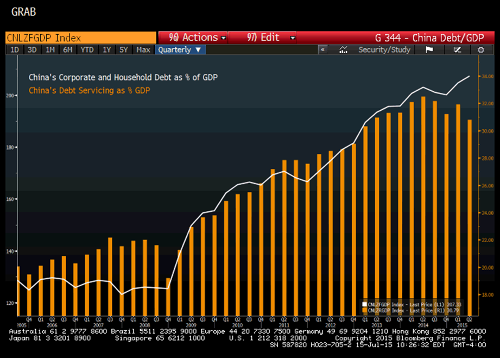Mixed Feelings about China

By Ricardo Rivera May 9, 2016
Translated from Spanish by Katarina Hall
The rise of China’s stock market in early April signaled that the world’s second largest economy is not in the terrible conditions that many believed. The recovery of exports in March—which broke the streak of nine months without any growth—seems to have convinced many that China is not going through a hard landing. Moreover, China’s expected deflation has yet to come. The People’s Bank of China has ceased melting reserves to defend its currency, and this year the yuan has strengthened against the dollar, causing the country’s capital outflow to slow down. Everything seems to be good news: the country’s exports rose almost 11% in March, the Chinese stock market recovered against the falls of Nikkei in Japan and Senesex in India, and investors have renewed faith because of the IMF’s projected growth for China.
But to the extent that doubts about China’s economic performance in the short term are cast aside, in the distance there is still a dense fog. It is important to remember that China’s economic growth numbers are the cornerstone upon which the legitimacy of the regime is held. Therefore, the regime must also incur great economic costs to sustain the political order.
China’s debt-to-GDP ratio has been increasing for quite some time. The steady increase of China’s leverage since 2008, to sustain the high expectations for growth rates until 2015, has put pressure on China’s ability to continue to borrow. To reach the growth target of between 6.5 and 7 percent, China will have to face great challenges in the next 5 years. These high leverage ratios have been sustained for so long that they have degraded the system’s liquidity, leaving it more vulnerable to an economic and financial shock.
Leverage only makes sense when the assets acquired are more profitable than the cost of borrowed funds. In other words, if China’s debt investment were efficiently allocated there wouldn’t be a problem. China’s growth rate of 6.9 signals the same. However, when it comes to a centrally planned economy, it is necessary to compare two kinds of growth: quantitative and qualitative.
It can be assumed that no matter which sector gets the borrowed funds, these will still be reflected as GDP growth. This nominal growth, however, does not necessarily mean real growth. In other words, it does not imply that the funds were efficiently allocated to profitable sectors. Even though authorities announced a credit cut to non-profitable companies and industries operating at a loss, it is alarming that the allocation mechanisms are flooding sectors of the economy that are not profitable with borrowed funds. If the returns of companies fall faster than the nominal interest rate, China will find itself in a bad situation. One can assume that the list of defaulted companies in China’s stock will increase in the next couple of months. Yet, there are two important things that are still unknown: 1. Will these companies default because of the government’s plan or as a symptom of erosion in their capacity to fulfill their obligations? 2. How will the stock market react?
Nowadays, no one talks of China’s sorpasso of the United States economy—an issue that was in fashion some years ago. Today, the main concern is whether China can effectively avoid a Japanese-style middle-income trap. One can conclude that the strengthening of the construction and export sectors in the short term is being done at the expense of a higher hard landing risk in the long term.
Get our free exclusive report on our unique methodology to predict recessions
Ricardo Rivera
Ricardo studied law at Universidad Francisco Marroquín. He is a teaching assistant at UFM’s Henry Hazlitt Center for introductory economics courses and a class on the philosophy of Hayek.
He is also a teaching assistant at UFM’s School of Economic Sciences for courses on future scenarios, ethics, and debate. At Universidad de San Carlos (USAC) he is a teaching assistant for the law and economics class in the master’s program in intellectual property. He is partner and general manager of the corporate law firm ALISA.
Get our free exclusive report on our unique methodology to predict recessions



